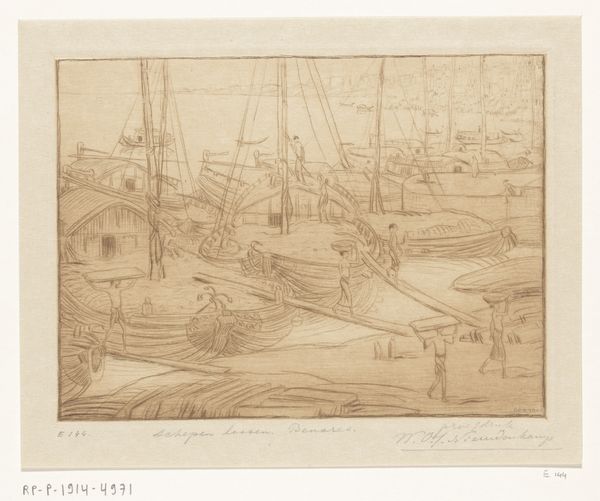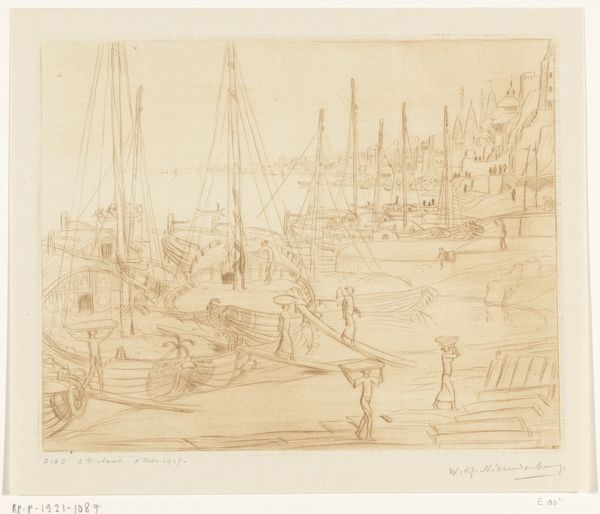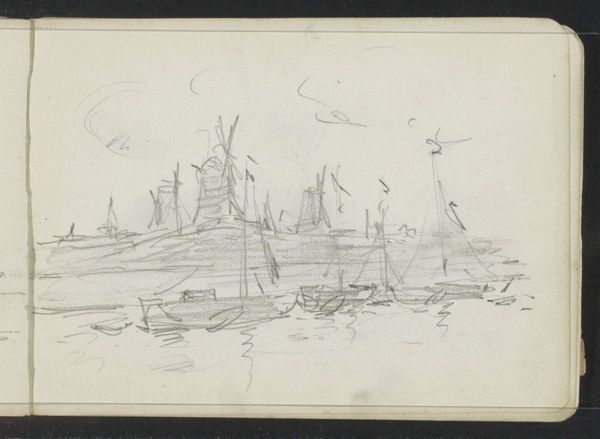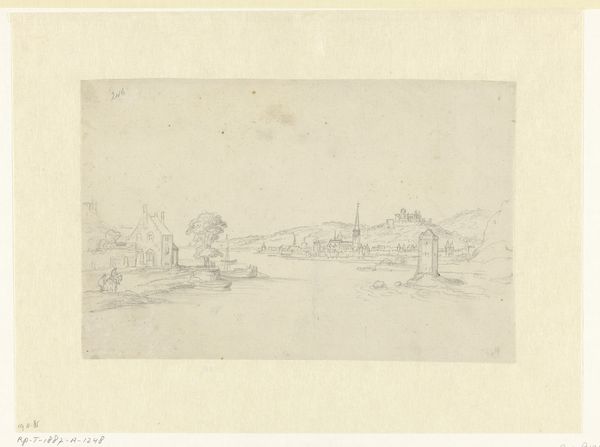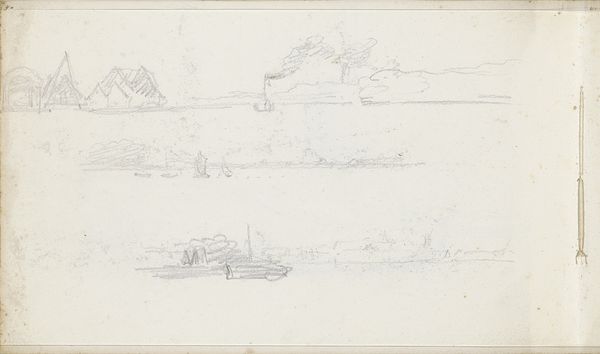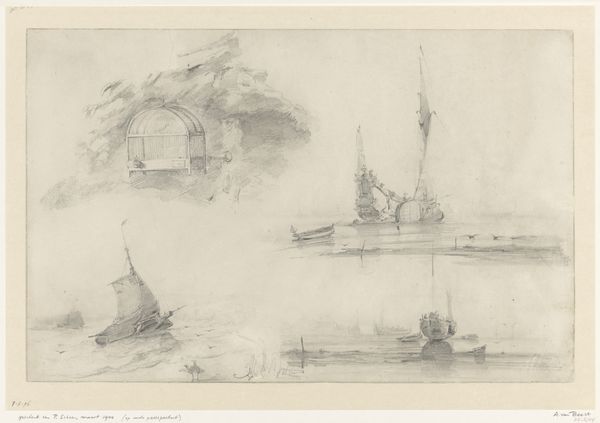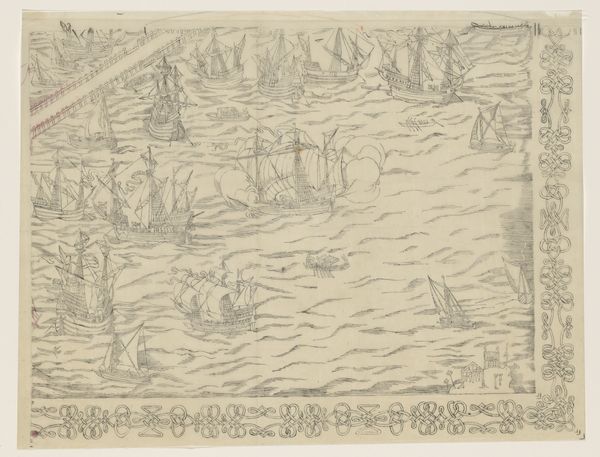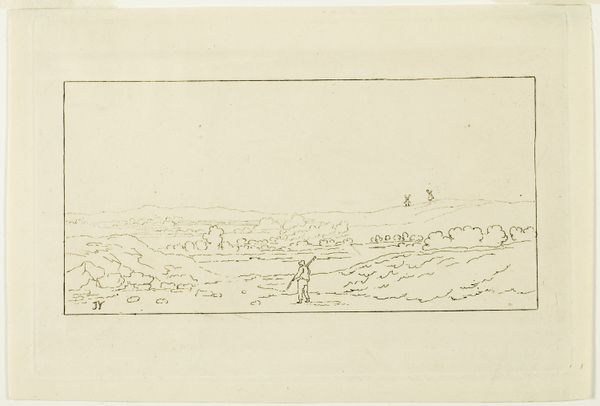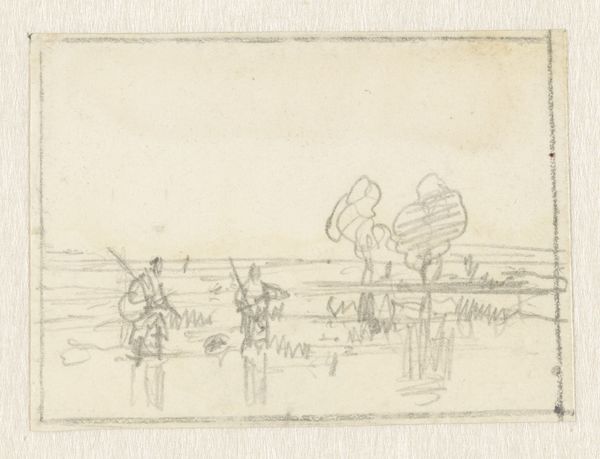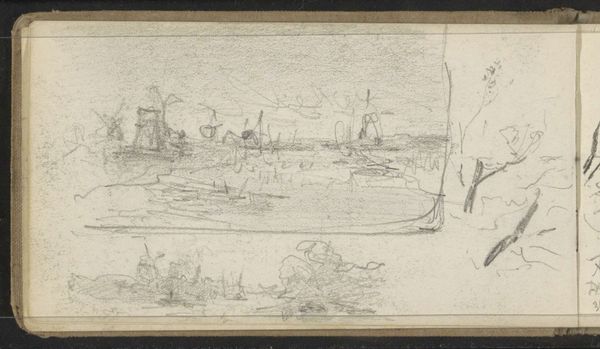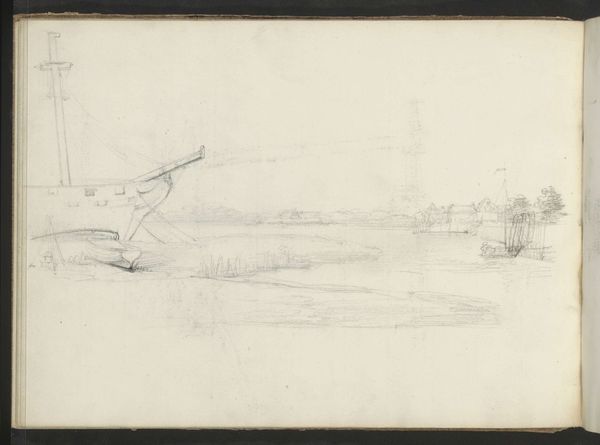
Wassende en zittende figuren aan de oever van de Ganges in Benares Possibly 1917
0:00
0:00
drawing, print, etching
#
drawing
#
toned paper
# print
#
etching
#
pencil sketch
#
asian-art
#
landscape
#
etching
#
figuration
#
sketchbook drawing
#
watercolour illustration
Dimensions: height 198 mm, width 247 mm
Copyright: Rijks Museum: Open Domain
Curator: This etching, potentially from 1917, is entitled "Wassende en zittende figuren aan de oever van de Ganges in Benares" by Wijnand Otto Jan Nieuwenkamp. Editor: My first impression is a feeling of serene chaos. The lines are so delicate, yet there's a density of figures and architectural details that almost overwhelms the eye. Curator: The delicate lines you're observing were created using the etching process, where the artist likely used acid to bite into a metal plate. It's interesting to consider the tools and labor involved in reproducing this scene. Were these prints meant for mass consumption or a more exclusive market? Editor: Knowing this was printed opens interesting avenues. Benares, now Varanasi, is one of Hinduism's holiest cities, often documented by Europeans at the time. Was this made for circulation back in Europe? What purpose would it serve? Curator: Precisely. We see depictions of local life and possibly religious rituals rendered in this linear style. Nieuwenkamp appears to be attempting an objective, documentary-style approach but we must question how colonial-era European interpretations of Asian cultures influenced his mark making, choices of materials, and reception. Editor: It brings up questions about access too. Etchings can create multiple impressions, facilitating wider distribution of imagery from formerly remote locales. Were these images presented to educate, exoticize, or some other colonial ambition? Curator: We must remember that the politics of imagery always plays a part. This print becomes a tool, a tangible representation of a distant land viewed through a particular lens and aimed at an intended audience. Consider also, the material act of trade made the paper on which it’s printed available. Editor: Absolutely. I’m left thinking about the complex interplay between artistic technique, cultural exchange, and the broader historical forces at play. It really challenges you to look beyond the aesthetic and consider the wider social and economic web surrounding its creation and circulation.
Comments
No comments
Be the first to comment and join the conversation on the ultimate creative platform.

